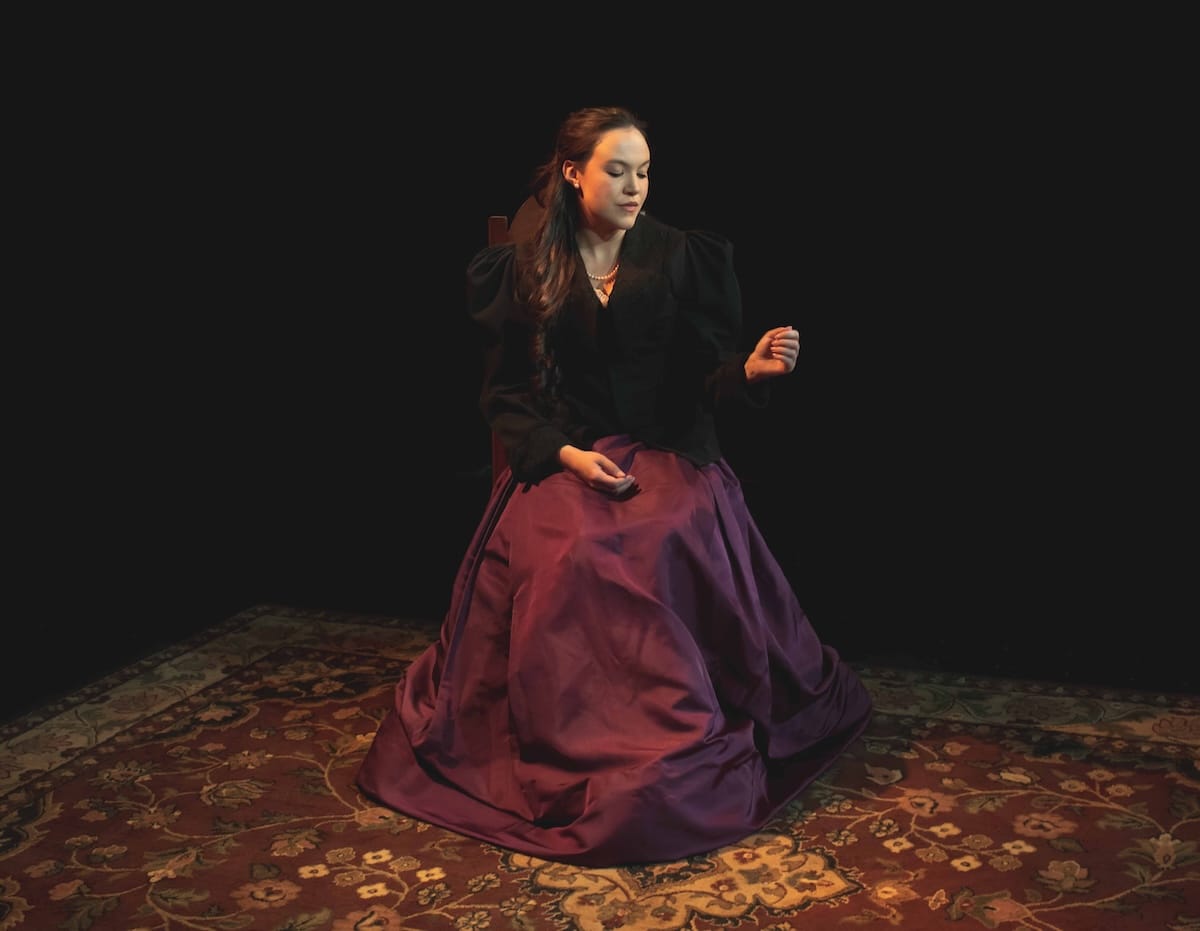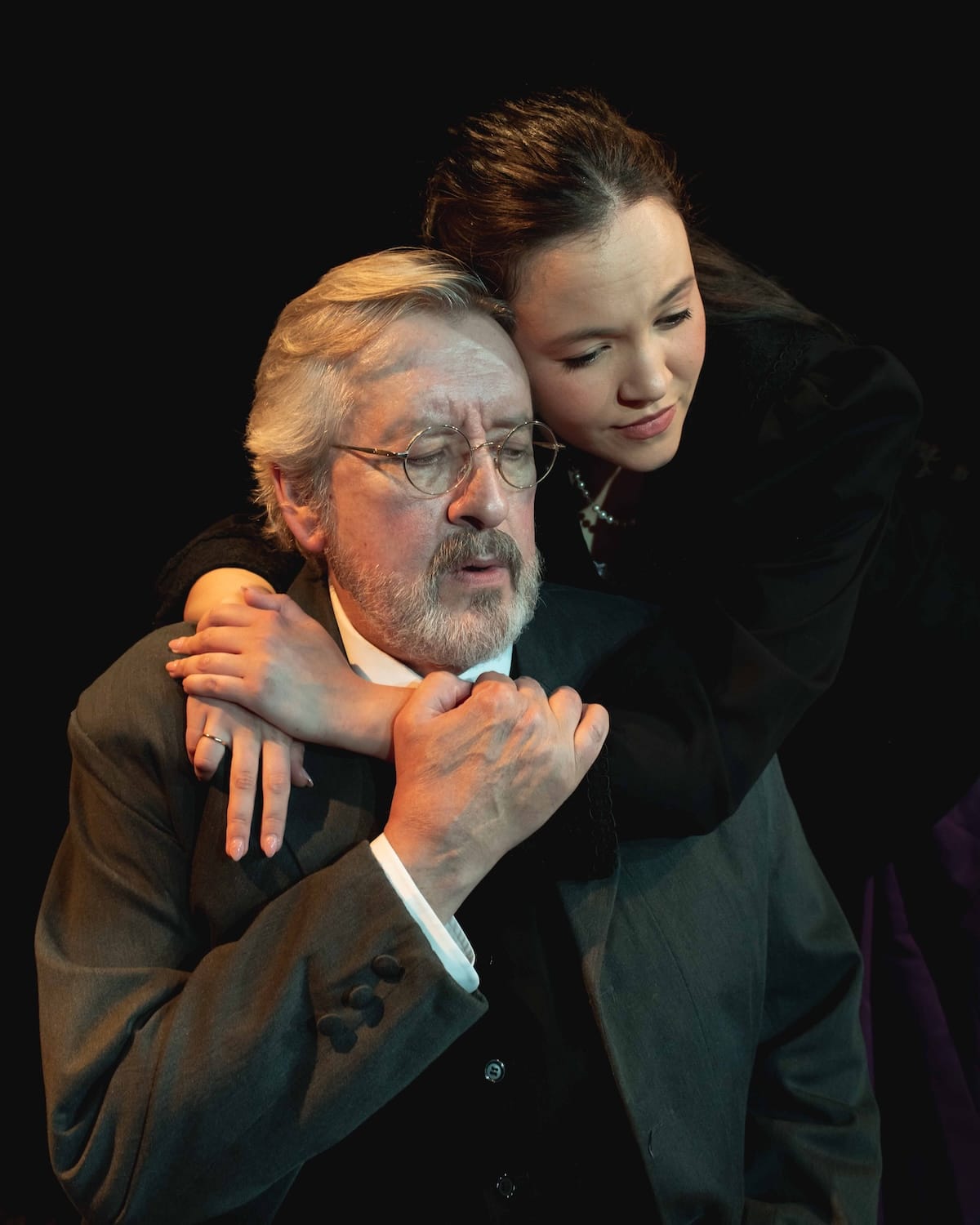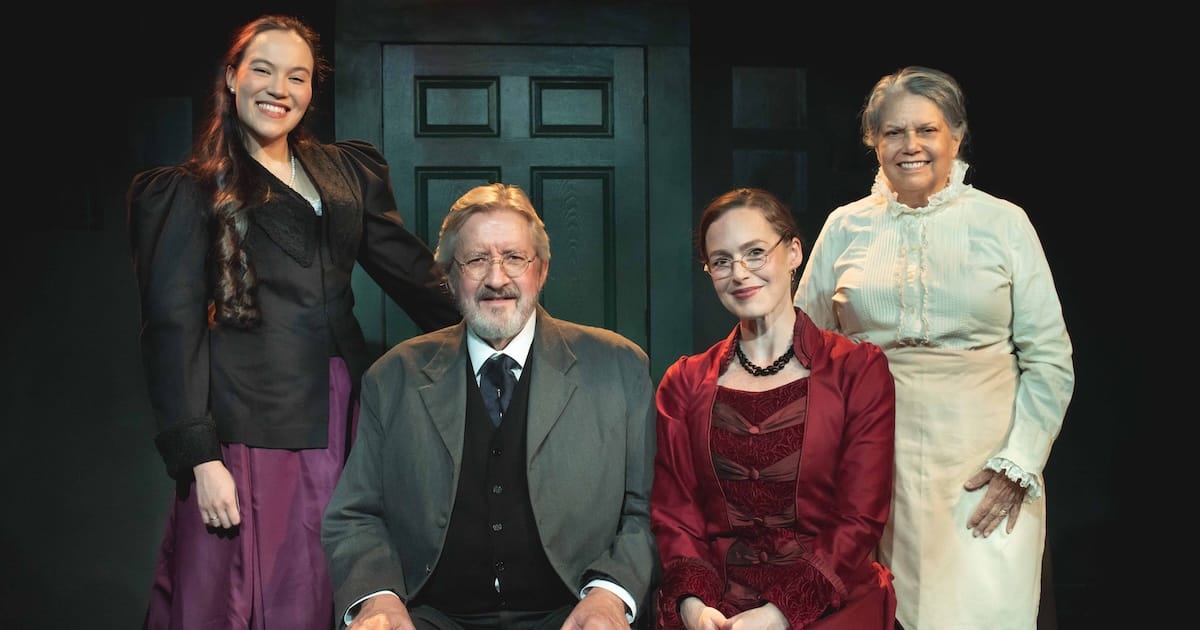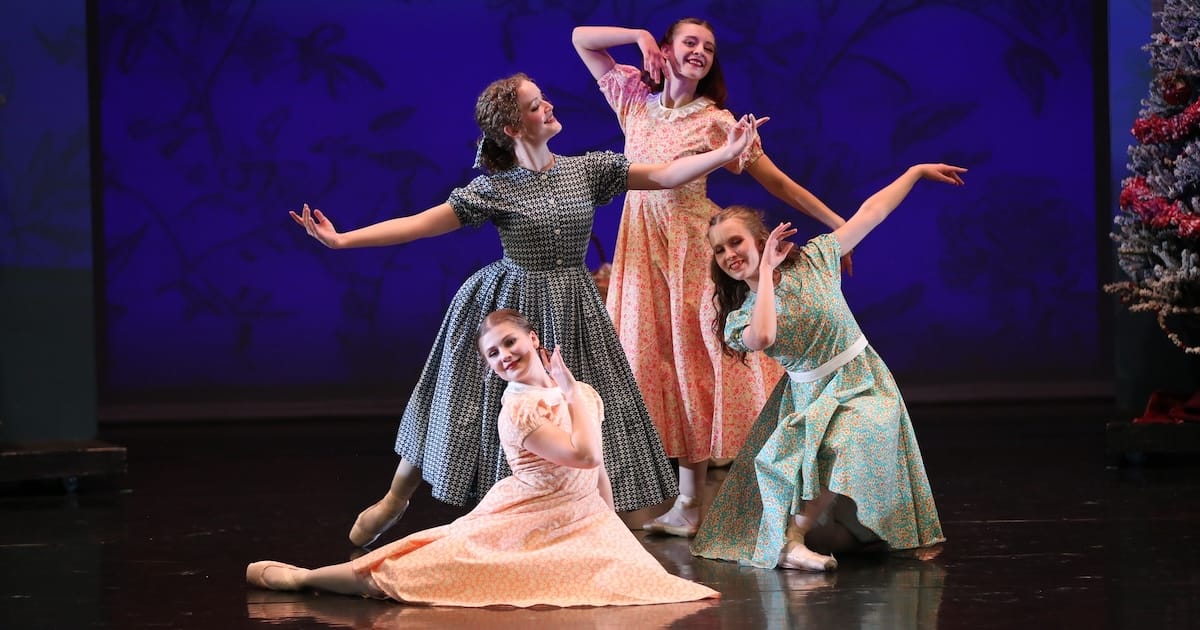Denver Theatre Ensemble delivers a solid but uneven take on Lucas Hnath’s drama.
In Lucas Hnath’s A Doll’s House, Part 2, Newton’s third law of motion is more than physics: It’s the play’s emotional engine. Every action has an equal and opposite reaction, and Nora Helmer’s legendary action, slamming the door and walking out on her family at the end of Ibsen’s original, still reverberates 15 years later.
In this sharp, intimate follow-up now playing at the DU Black Box through July 19, the Denver Theatre Ensemble gives Hnath’s script a local spotlight, pairing its piercing dialogue with raw performances, even as some directorial choices undercut the show’s impact.
Set entirely in a modest drawing room, Part 2 imagines Nora’s return to the home she left behind. Now a successful writer, she arrives with a pressing legal issue: It turns out Torvald never officially divorced her, and her radical publications about marriage have left her vulnerable to blackmail.
What begins as a transactional visit quickly spirals into a reckoning, as Nora confronts the people she left behind: her former nanny Anne Marie, her estranged husband, Torvald, and a now-grown daughter, Emmy, each demanding accountability.
Unanswered questions
You don’t need to know Ibsen’s original to follow this story. Hnath’s writing is contemporary and direct, punctuated by humor and philosophical edge. This 2017 play doesn’t attempt to mimic period tone or aesthetics, but rather leans into the questions that Nora’s departure raised and left unanswered. That freshness makes it a bold choice for Denver Theatre Ensemble, a young company in just its second season.
The production’s greatest strength lies in its cast, particularly Colleen Lee, whose reserved and layered performance as Nora anchors the evening. Lee doesn’t shout or grandstand. Her Nora is calm, strategic, even slippery. Lee’s performance shows how the past 15 years in the world have shaped Nora. She’s adapted, weaponized her wit and learned how to navigate power through quiet manipulation. At times, though, she’s too good at it. Her family becomes just another set of pawns, and the play never lets her off the hook for that.
Kendall Marlowe brings a bruised tenderness to Torvald. His entrance — startled, confused, and eventually flooded with heartbreak — is one of the production’s emotional high points. Their second-act confrontation is riveting, as Torvald tries to revise his narrative, only for Nora to see through the gesture. Their chemistry suggests a past filled with warmth, now hollowed by time and trauma. Marlowe deftly communicates a man who’s been wounded and reshaped by abandonment, and who resents being redefined without consent.

Enter Emmy
The second act begins on an explosive note with the appearance of Rhianna DeVries, who plays Emmy with radiant clarity and biting confidence. DeVries, a non-binary performer, brings electric energy to the second act. Their Emmy is composed, smiling and razor-sharp, a perfect foil to Nora’s evasiveness. DeVries’ performance conveys Emmy’s understanding of her mother as both myth and manipulator, and she refuses to let Nora off so easily.
Julie Williamson’s Anne Marie, unfortunately, doesn’t fare as well. She opens the play opposite Nora in what should be a moment of reintroduction and emotional disorientation, but her performance is muted. The dialogue lands, but the reactions and subtext don’t come through.
That stasis is reinforced by director Ina Marlowe’s approach, which leans heavily on a static, two-chairs-and-talk format in many scenes, which drains momentum. This choice is especially damaging in a play designed to run at 90 minutes with no intermission. Here, it stretches to two hours, with long pauses that often contradict the urgency embedded in Hnath’s text.
Costumes by Julie Nagle Attebery, however, provide crucial texture and period grounding. Each ensemble feels pulled from the 1890s and helps shape the characters’ emotional and social positions. Nora’s refined red dress exudes confidence, standing in stark contrast to Anne Marie’s white maid’s uniform, which reflects a life of duty. Torvald’s gray suit is staid and formal, suggesting a man trapped by convention, while Emmy’s purple dress and black overcoat bring a youthful vibrancy and independence to the stage.
Other design elements are more understated. The set by DeVries consists of a single green door with a small stained-glass window above it, a few wooden chairs and a modest carpet. Squares on the walls, where portraits once hung, speak volumes: Everything connected to Nora has been erased. The lighting by Erik Frederiksen is similarly restrained, largely functioning as “lights up, lights down,” with occasional subtle shifts for emotional isolation.

Kendall-Marlowe as Torvald and Rhianna DeVries as Emmy in the Denver Ensemble Theatre production of ‘A Doll’s House-Part 2.’ | Photo: Colleen Lee Photography
Short on action
Unfortunately, the static design sometimes bleeds into the blocking. Nora, whose very presence is meant to destabilize the household, spends an inordinate amount of time seated. Her dialogue brims with a desire to escape, yet she’s often physically still. For a character who walked out once and might walk again, more dynamic movement could have made her internal restlessness more tangible. As it stands, the staging too often undercuts the momentum of Hnath’s taut script.
Still, there’s undeniable power in watching this ensemble sink their teeth into such thorny, emotionally complex material. A Doll’s House, Part 2 is not a cheerful play. It ends where it began: with a door and the consequences of one woman’s defiance.
This production doesn’t offer resolution so much as reflection. And while it could have benefited from more dynamic direction and sharper pacing, the performances, especially from Lee, Marlowe and DeVries, carry the weight of Hnath’s ideas with clarity and force.
For audiences drawn to psychological drama, this is a thoughtful and often gripping production. It may not be the most visually striking version of A Doll’s House, Part 2, but it opens the door to big questions and leaves them swinging in the air long after the lights go down.
A Colorado-based arts reporter originally from Mineola, Texas, who writes about the changing world of theater and culture, with a focus on the financial realities of art production, emerging forms and arts leadership. He’s the Managing Editor of Bucket List Community Cafe, a contributor to Denver Westword and Estes Valley Voice, resident storyteller for the Bonfils-Stanton Foundation and co-host of the OnStage Colorado Podcast. He holds an MBA and an MA in Theatre & Performance Studies from CU Boulder, and his reporting and reviews combine business and artistic expertise.






Leave A Comment